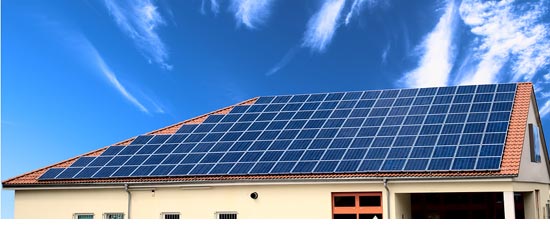No sunny skies for county’s solar grants
February 24, 2010
County officials are scrambling to regroup after the surprise denial of grants they were banking on to help launch a program for homeowners seeking affordable solar and other green-energy retrofits.
Under the program, property owners would repay loans for solar panels and other energy saving devices through an annual assessment on their property tax bills. Once launched, the county’s program would represent the largest of its kind for private property owners in the nation.
There would be no upfront cost to homeowners, who, depending on the extent of the retrofit, could save up to 30% on energy bills. Greater savings were anticipated from a state grant that would have cut interest rates by up to a full percentage point for initial participants.
But the California Energy Commission earlier this month rejected two grant applications from the county—one for $13.5 million to help lower homeowner borrowing costs and the other for $12.9 million to market the program throughout the county’s 88 cities. The commission said the county failed to meet the minimum score required for both applications.
The commission made a $4.7 million grant to the city of Los Angeles, but overall awarded nearly 95% of the available federal funding it administers through the State Energy Program to local governments in Northern California.
“Ultimately, not having these grants makes the program more expensive to property owners in L.A. County and makes it harder for us to promote it,” said Howard Choy, head of L.A. County’s clean-energy division in the Internal Services Department. Instead of taking part in a countywide promotional plan, individual cities will need to come up with ways to advertise the program to homeowners who live outside the county’s unincorporated areas.
The homeowner energy-efficiency loan program, if approved by the Board of Supervisors, is set to begin in August with seed money provided by approximately $12 million in American Recovery and Reinvestment Act (ARRA) funds. Eventually, bonds will be issued and investors repaid as homeowners pay off their retrofit loans.
A typical homeowner of a 2,000 square foot residence might invest $10,000 to $20,000 to upgrade a house by sealing leaks, changing out windows, upgrading the heating and air-conditioning system and purchasing new energy-efficient appliances. Such a whole-house energy retrofit could shave nearly a third off the annual energy bill, and even more if solar-panels are installed to generate additional electricity. (Estimate your home’s potential on the county’s solar map.)
If a homeowner sells the house before repaying the loan, the assessment—along with the improvements—would remain with the property. And that would remove a major reason why some property owners have shunned solar: a concern they’d be unable to recoup their initial investment before selling the property.
Although the California Energy Commission’s rejection of the county’s grants proposals is not fatal, it does present obstacles to getting the program off the ground—particularly by undermining the county’s ability to offer homeowners lower interest rates on energy-saving investments. County officials had hoped to entice public participation through those lower rates, which would have reduced the semi-annual property assessment and shortened the time needed to recoup the initial investment. Overall, the goal is to have the energy projects pay for themselves over the course of 20 years.
Choy said he was shocked by the funding shut-out. “We thought we had a very, very strong application representing a key region,” he said in an interview, noting that the county’s submission was prepared by the same consultants whose grant applications had been approved for other jurisdictions. “We are arranging with the [commission] to discuss the specifics of that scoring in a face-to-face briefing.”
The county’s program is part of a statewide effort formally known as Property Assessed Clean Energy (PACE), created in connection with the sweeping clean energy initiative authorized in 2008 under Assembly Bill 811.
Posted 2/24/10













 405 bridge work causes a stink
405 bridge work causes a stink
